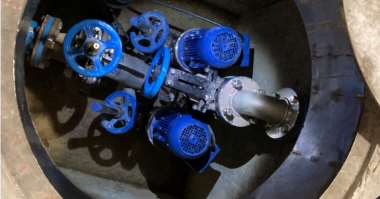Each year millions of dollars are spent maintaining pumps that are installed in systems designed to fail.
It is important to understand that a pump is merely a “component” in a pumping system. It is usually the only moving part, and therefore the weakest link and often the link that will fail first.
Companies fix (repair) what is thought to be the “cause of failure”. This may be a seal, bearing, or other component. Once the failed component is repaired the pump is placed back into service. Often a root cause failure analysis is written. However, the failure may not be due to an actual component failure, but a system induced failure, and the component that failed, and is being repaired or “upgraded” is merely the weakest link.
For a pumping system to operate correctly it is important for the pump to be properly selected. Selected correctly from both a mechanical and hydraulic standpoint.
The pump must be properly installed in the pumping system. And it must be properly operated and maintained:
SELECTION, INSTALLATION, OPERATION, MAINTENANCE
If these tasks are done correctly, maintenance is not necessary except for minimum wear and tear.
This article is the first in a series where we will address hydraulic selection of centrifugal pumps, mechanical design, installation, and operation and maintenance of centrifugal pumps.
A pumping system operates where the pump curve and the system resistance curve intersect. This important fact is one of the most overlooked concepts when designing or troubleshooting a pumping system.
The pump curve has a head vs. capacity portion, which indicates the change in flow with respect to head at the pump. It is generated by test by the pump manufacturer. We will review the key facts that the pump curve offers.
The system resistance curve is the change in flow with respect to head of the system. It must be plotted by the user based upon the conditions of service. These include: physical layout, process conditions, and fluid characteristics.
Anyone operating a pumping system must know where the pump is operating. Otherwise, it is like driving a car and not knowing how fast its going.
So in my next post, we will discuss how to understand pump curves.




Comments